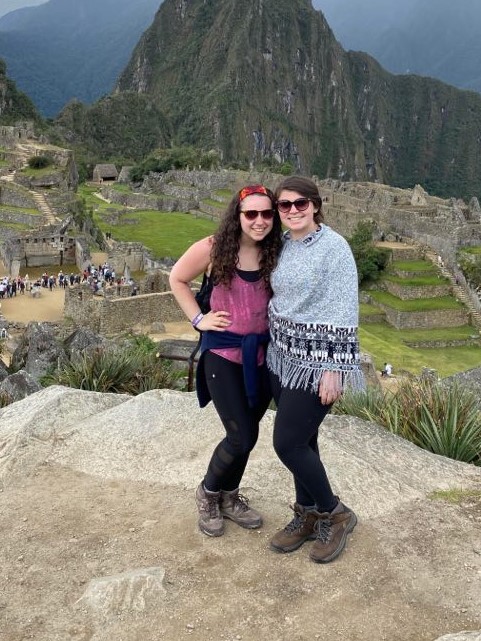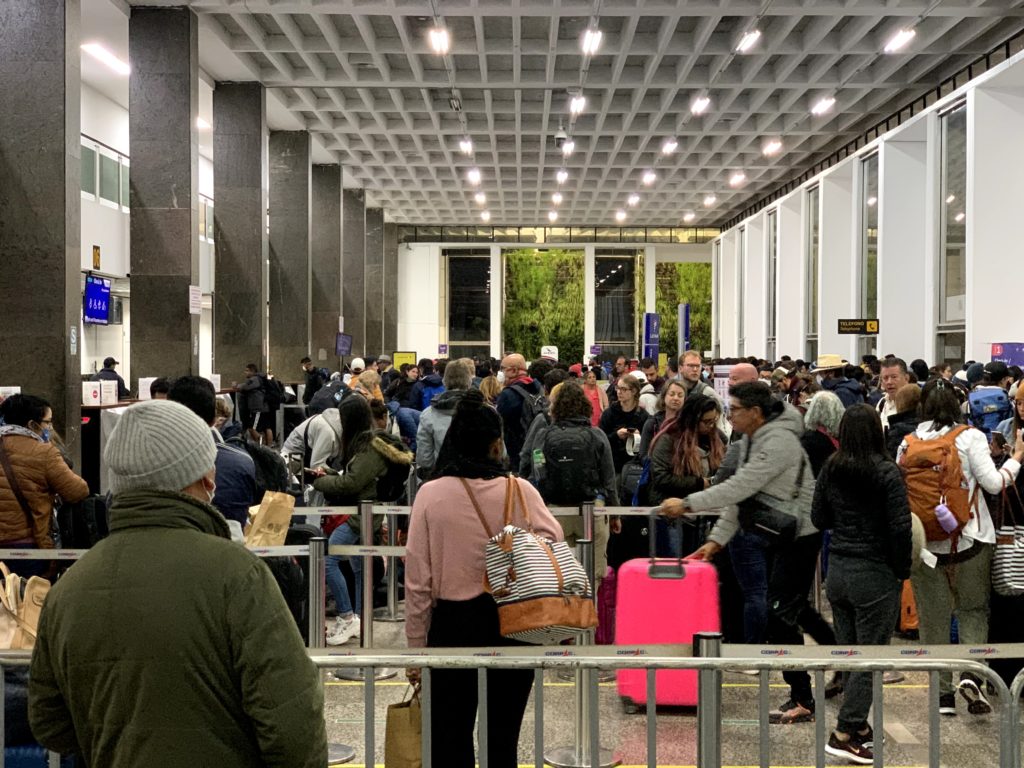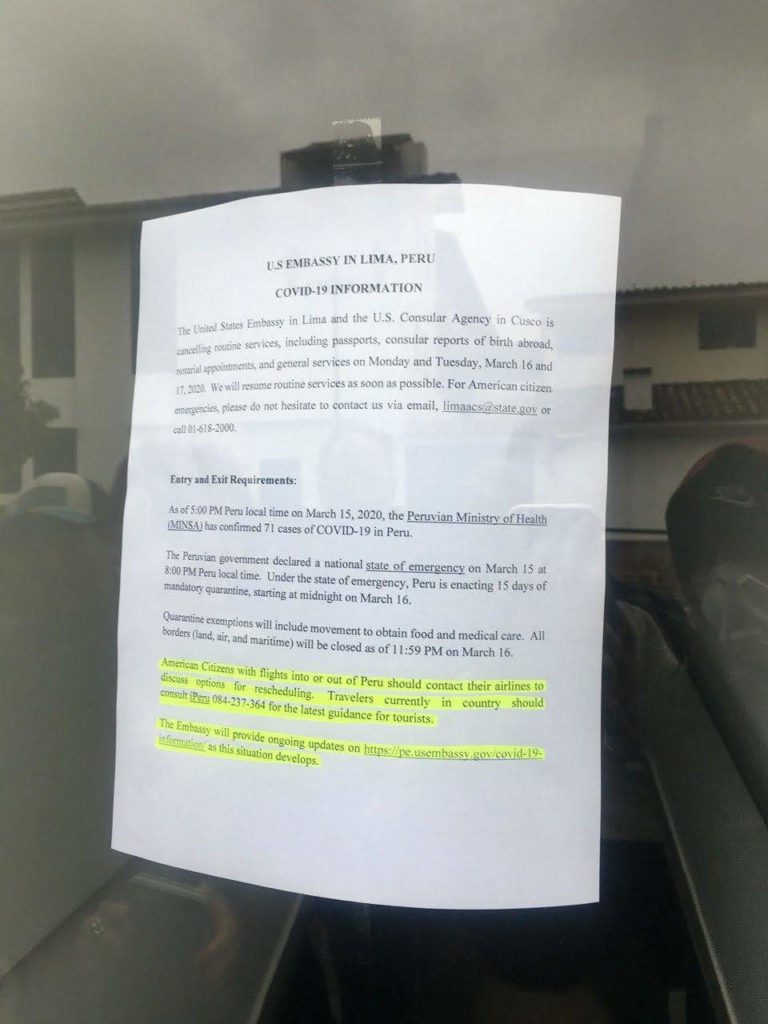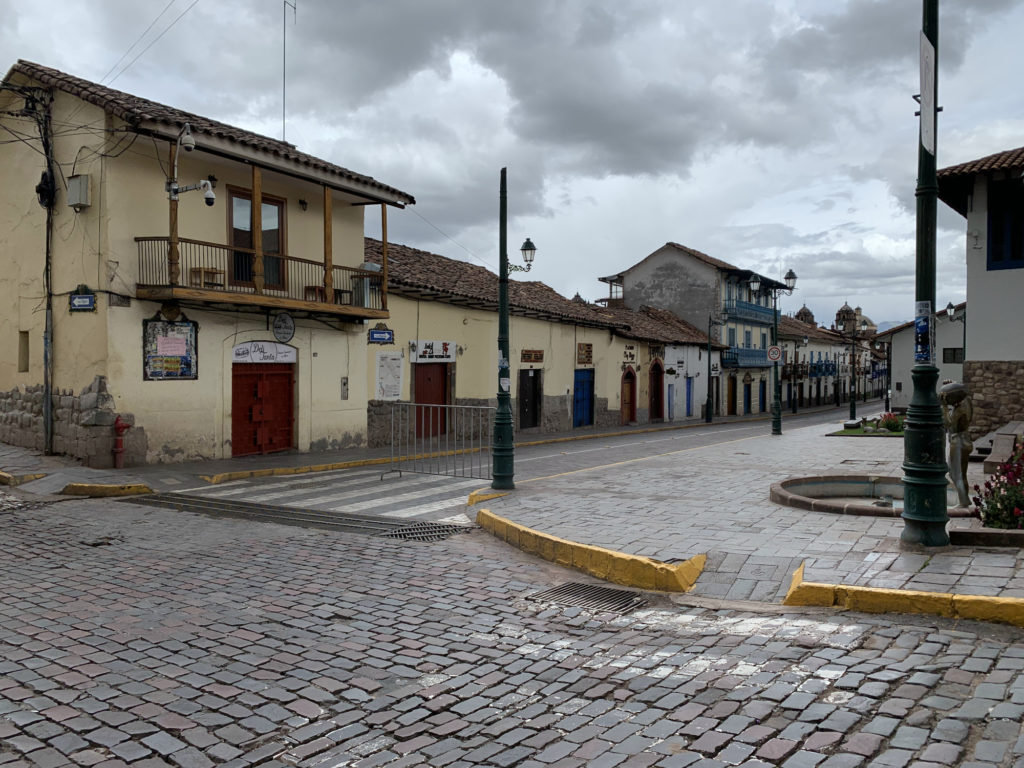James Mead
Web Editor
[12:55 p.m. March 24, 2020]

In the midst of a national state of emergency to prevent the spread of COVID-19, one Fredonia alumna, Bailey Bass, has become stranded in Cusco, Peru.
Bass, Class of 2018, entered the country with a friend, Mariana Hand, on March 9.
The plan was originally to travel across South America before Hand started medical school in the fall, then to return to New York on March 25.
However, on March 15, President Martin Vizcarra of Peru declared a 15-day state of emergency.
Included in this state of emergency was a declaration for the total closure of Peru’s borders, excepting only cargo and merchandise, and restrictions on all travel in the country.
“Sunday, March 15 was an odd day for Mariana and I,” Bass wrote in an email. “Our social media platforms were flooding with the coronavirus and suggestions on social distancing from friends back in the States, but things in Cusco were as calm as could be.”
“Every once in a while we would come across a sign about the virus which suggested in Spanish to wash your hands, but that was it.”
According to several sources, including former Fredonia resident Jessica Gee Nosworthy (also in Peru as of March 20), there were few signs of Peru’s impending quarantine prior to the president’s announcement.
Yet in a matter of hours, the situation quickly escalated.
“When we got back to our hostel, the other girls … were crying and talking very fast in Spanish. I asked Mariana what they said [and] she responded with, ‘the Peru president has declared a state of emergency.’”
“‘They are going to close the borders.’”
Bass and Hand immediately rebooked new flights to the U.S., but both flights were soon canceled.

Thousands of travelers sought return to their countries, but only hundreds were able to board previously-scheduled commercial planes before the Peruvian government restricted air travel to chartered aircrafts.
“You don’t know what’s true, because everyone is telling you different things,” said Bass. “People are saying that there are these very expensive flights that you can buy, and it’s a hoax.”
“The Peruvian government has only permitted chartered flights.”
Speaking at a press conference on Saturday, March 21, Vice President Mike Pence said, “Our State Department has been working very closely with our embassies in those relevant countries [to evacuate U.S. citizens] … I think there is an ongoing effort to address that with chartered commercial flights that the government is providing.”
However, as of March 23, no details have been provided about finalized upcoming flights, according to the U.S. Embassy in Peru’s official website.
[UPDATE 1:04 p.m. March 26, 2020: Three flights for U.S. citizens are scheduled to depart from Iquitos, Lima and Cusco today.]
Unconfirmed reports suggest that the U.S. government is having an easier time chartering flights to Lima, Peru than anywhere else in the country, due in part to the number of travelers there, as well as the land elevation challenges of other cities, such as Cusco.
However, travel within the country is heavily restricted, eliminating the possibility for travelers to relocate to Lima.

“We are only allowed outside for food or medical purposes,” wrote Bass. “There is a travel ban. No driving, no taxis, no buses, nothing … and if you break any of these rules you could be detained.”
“I think the most overwhelming aspect of these rules,” Bass continued, “is that each day that we are in quarantine, a new rule appears.”
Currently, there is a curfew imposed which bans people from leaving their homes between 8 p.m. and 5 a.m., masks are required in order to go outside and the consumption of alcohol is banned.
“The quarantine didn’t start with all of these restrictions,” said Bass. “The restrictions continue to grow each day.”
As of March 23, Peru has 395 confirmed cases of coronavirus and five deaths.
International travelers in Peru are staying connected through group chats, and a public Facebook group called “Americans Stuck in Peru” has been established to keep U.S. travelers and their families in communication with the latest information and resources.
A public spreadsheet tracking the number of U.S. citizens still stranded in Peru currently lists over 2,500 names.
The U.S. government recommends that any U.S. citizen traveling abroad register with the Smart Traveler Enrollment Program (STEP) so they can be accounted for.
“Basically everybody has said to us, ‘make sure they’re registered for STEP, emailed this specific information’ … After you get that response 10 times, it’s frustrating,” said Bass. “Lately, it’s just been ‘we’re in the process, we’re working on it.’”

She advises anyone who wants to help to spread the message on social media.
“We need people to spread the word. If you know any government officials, reach out. Call your senators, call your representatives,” she said.
People are also able to share this issue on social media, using the hashtag #StuckInPeru and tagging U.S. representatives in order to draw attention.
“There’s only going to be a flight out if people reach out … The more calls they get, the bigger the push, the quicker, the more likely it’s going to happen.”
For now, Bass is staying with seven other international travelers in a hostel.
“I think in a time like this we have to be hopeful,” she said.
“I’m healthy, I’m safe and I have a bed to sleep in. For all of those things, I’m really thankful.”
